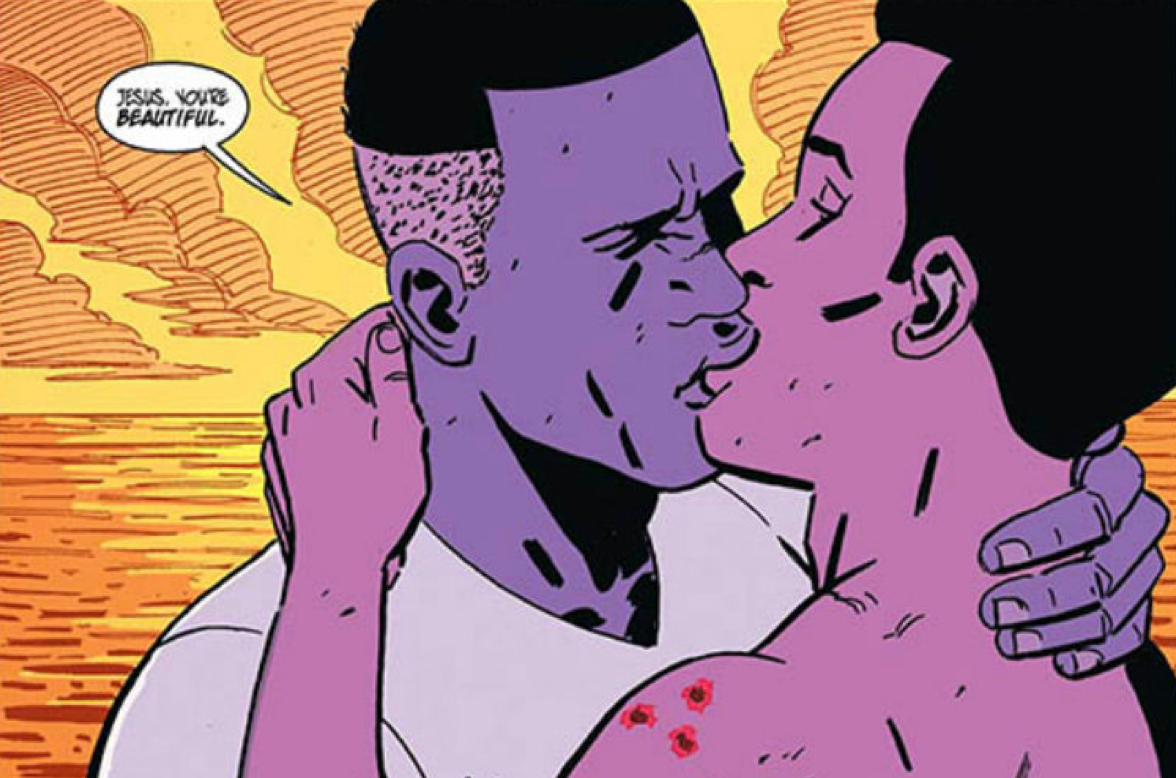Why Are Queer Writers Discouraged From Writing About Themselves?
By Cameron Colwell
Queer representation has been the subject of much discussion this year.
First, we had the ‘Dead Lesbian Syndrome’ video in April, and then more recently, the rise of ‘Give Elsa A Girlfriend’ and ‘Captain America Is Gay’ as trending topics on Twitter.
I’ve been thinking about queer representation for a long time because, as a gay writer, I’ve been wondering where the gays were in film and literature since I was about twelve years old. I’ve remained passionate about the subject, at one point talking about it on a panel at Newcastle’s annual National Young Writer’s Festival. Throughout my bookish adolescence, I would occasionally ‘sense’ some queerness in a story; a stray line that indicated same-gender attraction, a male character’s lingering fondness over another male character, an interaction that suggested that I might be reading something about someone like myself.
I was, as far as I remember, disappointed each time. Does never finding queer characters account for the isolation that permeated my formative years?
Well, no. Direct schoolyard homophobia is a far more solid cause for that. But it might’ve helped if I’d been able to see my experiences reflected in fiction.
That’s why I totally understand the drive behind the above campaigns. People complain that it’s ‘just fiction,’ on the dead queer woman trope. But like it or not, the art we consume, whether commercial or arty or in-between, has a great bearing on how we see our own identities. Not only is fiction a mirror of the world, it also informs us what is possible within it. I’ve met queer people who realised they were queer on encountering a character in a film and finding themselves relating. Once, a boy I was trying to impress asked what I wrote about, and he was impressed my protagonists were gay. He said that he could never “get into” any romance films until he saw one which featured a gay couple.
The ‘bury your queers’ trope reflects a kind of homophobia which suggests that nobody in the vastly-talented writer’s rooms of the world can think of a satisfying ending for a queer character that doesn’t end in a funeral.
This has been said better, but not about queer people. Junot Diaz, author of This Is How You Lose Her, was talking about children of immigrants when he delivered the best argument for diverse representation that I’ve heard:
“You know, vampires have no reflections in a mirror? There’s this idea that monsters don’t have reflections in a mirror. And what I’ve always thought isn’t that monsters don’t have reflections in a mirror. It’s that if you want to make a human being into a monster, deny them, at the cultural level, any reflection of themselves. And growing up, I felt like a monster in some ways. I didn’t see myself reflected at all. I was like, “Yo, is something wrong with me? That the whole society seems to think that people like me don’t exist? And part of what inspired me, was this deep desire that before I died, I would make a couple of mirrors. That I would make some mirrors so that kids like me might seem themselves reflected back and might not feel so monstrous for it.”
When I first read that quote, it reminded me of my adolescence, particularly that I felt I was somehow sui generis, that gay thirteen-year-olds do not exist, that I was an anomaly of some sort.
There’s this certain argument that if queer people want to see queer people in art, they should get to making some of their own instead of retroactively making characters gay. Firstly, I don’t really understand what makes these characters so bound up in heterosexuality, but this notion also neglects that a lot of queer people are encouraged, explicitly or otherwise, not to write about themselves.
When I first started writing fiction, I would often feel a vague pressure to ‘hetero up’ my stories, and would often write same-sex attracted people into early drafts, and then make it about straight people when it came time to submit. That, to me, made it a ‘serious’ story. Even recently, when I had my novel read by an established author, he was greatly encouraging, but also suggested adding in a straight point-of-view character, to make it more commercial.
When I first began to finish stories in which The Gays made it all the way to the final draft, I felt intensely fearful, but also relieved. Part of the impetus for my book, in fact, is that I wanted to write the queer coming-of-age novel that I used to scan bookstores for. I wonder if I’d even know how to write it without eventually finding some queer stories to model on, but when I figured out how to do so, I felt a new sense of agency and satisfaction in my work.
However, I do still regret that it took me most of my teenage years to get to that point.
While some queer protagonists in the stories we love won’t save the world, I can say with confidence that an increased representation would make it a less inscrutable and less alienating place for young queer people. Three-dimensional, nuanced, soul-salving representation is unlikely to come from juggernauts like Marvel and Pixar, who are beholden to the commercial demands of the masses, and in some cases send their films to places where queerness is regularly met with violence, but still, it’s good to see that these discussions are happening.
I think about my younger self feeling lost, and the idea that feeling lost may have been alleviated with art I saw myself in, and I don’t think that’s something to be let go.

